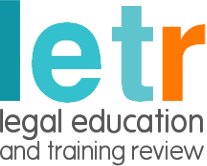Conclusions
2.170 This chapter has focused on three aspects of current LSET: firstly the structure and content of its main programmes; secondly, the knowledge and skills that are considered important by the sector, and the knowledge/skills gaps that are thought to exist: and, in the final section, the perceived strengths and weaknesses of the system of LSET itself.
2.171 The chapter highlights the relative complexity of a system that operates through a multiplicity of discrete individual training systems with a range of content and objectives. Two fundamental axes are identified around which current models of training for legal services are constructed:
- axis (i) those that frontload foundational knowledge and skills in an academic environment and those which embed training, to varying degrees, within the workplace, and
- axis (ii) those which start from a broad knowledge-base as against those which develop a relatively narrow specialism from the outset.
2.172 Despite these different operating environments, there is a relatively high level of agreement on many of the key knowledge and skills areas required, with a high degree of support for the existing Foundation subjects at QLD and GDL levels. Many of the traditional foci of education and training are perceived still to be relevant and valued, and there is concern that the core functions of each stage should not be altered by adding more or different objectives.
2.173 There was a high level of consistency in the skills and tasks utilised as part of solicitors’ work in 1991 and 2012 and in the relative proportions of time spent on each of these. However the data offers some clear indications of both knowledge and skills gaps, and areas for improvement. These arise across the training regimes considered. Key amongst them is: professional ethics and legal values, commercial awareness, and, less consistently, commercial law. On the skills front, the need to enhance writing skills and communication generally is widely recognised, and drafting deficiencies tend to follow on from that (particularly in the context of the LPC). There is a perceived need to enhance legal research at all stages, and to maintain an adequate focus on communication and related ‘soft’ skills.
2.174 The final section of this chapter looked at the assurance of quality through consistency of standards, issues of mobility, progression and access, and the effectiveness of CPD. These themes are linked by the concerns for quality in LSET, and the need to ensure that LSET has the flexibility to respond to a changing market environment. The system needs to be able to identify, attract and retain the best for every role, assure their continuing competence, and provide a reasonable degree of workforce mobility across, as well as within, regulated and related occupations.
2.175 There is no evidence that the system, or any one professional regimen, is fundamentally ‘broken’. Indeed there is substantial evidence of the strength of the system, both from domestic and international viewpoints. However, consistency of standards is a challenging problem for some training routes. As already recognised by regulators, CPD is an area in need of substantial attention.
2.176 At the ‘grassroots’ and among those, mostly at the early stages of a legal career, who feel that the system for qualification as solicitors and barristers does not work well for them there is a different view. This largely reflects their dissatisfaction with cost, and the difficulties of access to the profession. Inevitably, some will spend considerable sums in pursuit of a career that they are never likely to achieve. The impact of such a waste of human and economic resources, and its particular consequences for the development of a diverse and socially representative profession is a growing concern. Elements of this problem are susceptible to regulatory influence and others may not be. There is a complex balance to be sought between satisfying the business needs of the future legal services sector (to be addressed in the next chapter) and seeking to achieve equality of access to all.

